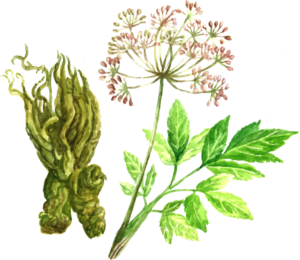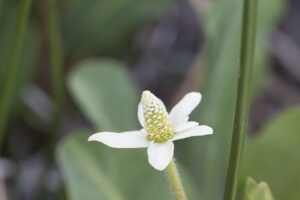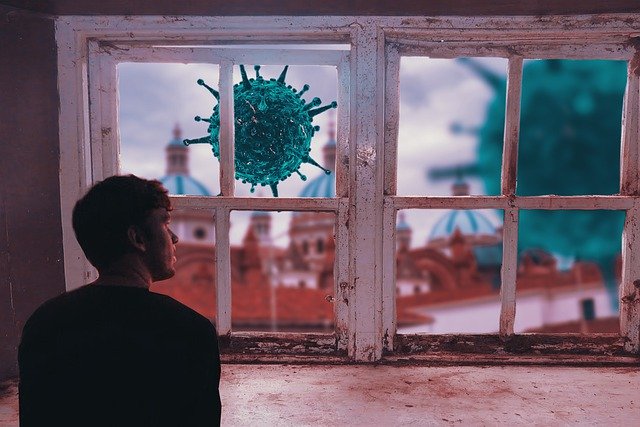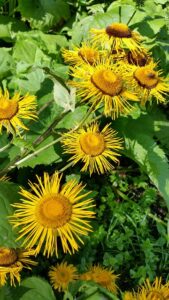In our continuing discussion of COVID-19 From an Herbalists Perspective, we’re talking about the first stage of actual illness. The clinical observation stage.
These stages are based on initial reports coming out of China and Italy. All health and herbal suggestions are based on information included in these reports, from front line herbalist, and from my own experience.
According to these sources there are 6 distinguishable stages to the novel corona virus. What we know about the virus is constantly growing. This is a new illness. Any herbal remedy or recommendation can and does change when the situation or presenting symptoms change. This information is not intended to be medical advise. But is meant to give people extra tools. To help each of us take responsibility for their own health.
6 progressive stages when considering herbal treatment for COVID-19
- Prevention
- Clinical Observation
- Early Stage
- Closing of the Lungs
- Sever Period – Lungs Closed In and Out
- Recovery
Previously we talked about how COVID-19 operates. We also discussed some things we can do to prevent illness by bolstering our body’s natural defenses. The next phase is what Chinese herbalists and Acupuncturists are calling Clinical Observation. Click here to review the post about how the corona virus operates and here for a review of prevention strategies.
Thankfully not everyone will progress to the more severe stages of the illness. However, it’s a good idea to have a plan. This way you’ll be prepared to help yourself or others if the virus progresses.
The clinical observation stage from an herbalists perspective.
This is when we first begin to feel unwell. Yet, the symptoms seem kind of ambiguous. If you’re like me, you might ask yourself. Am I overreacting? Is this just fear? Is this all in my mind or am I sick? You may feel a little off. A little warm. A little feverish. But it’s mild enough that we tend to explain it away. And it may be something else. Maybe the feelings are caused by a simple cold or allergies. Either way, it’s time to pay attention.
How and what your feeling is real. It doesn’t matter where it’s coming from or what’s causing it. With life slowing down now, we have the opportunity to stop. let’s take advantage of this time to take care of ourselves and stop it here.
Symptoms of COVID-19 in the Clinical Observation Stage
Some of the symptoms you may experience in the clinical observation stage include;
- Generalized flu-like symptoms. Like feeling ache and tired.
- Slight headache.
- Gastrointestinal discomfort including loose bowel, diarrhea or incomplete bowel movements
- Stomach or gastrointestinal pain
- Fatigue with or without a fever
- Loss of taste and smell
- A dry cough that may or may not be persistent.
Generalized Recommendations for COVID-19 in the clinical observation phase.
Nonsteroidal Anti-inflammatory Drugs (NSCAID’s)
Do not take NSCAID’s including over the counter medications like ibuprofen. Medical professionals have discovered these medications can make progression of the illness come on more quickly with more severe symptoms. With this in mind, the following products should be avoided.
- Aspirin (brand names include Bayer, Ecotrin, Bufferin)
- Ibuprofen (Motrin, Advil)
- Naproxen (Aleve, Naprosyn)
- Meloxicam (Mobic)
- Celecoxib (Celebrex)
- Indomethacin (Indocin)
Tylenol
At the present time medical authorities are saying that over the counter medications containing Acetaminophen (Paracetamol) is ok to use. French medical doctors and researchers say that Tylenol may decrease symptoms of fever without counter-attacking the inflammatory process.
I am not a doctor. But, let’s look at these medicines from a holistic perspective. Ibuprofen works mostly through the kidneys. Acetaminophen works through the liver. The kidneys are an integral part of the disease process because they are responsible for processing fluids. COVID-19 causes and build up and stagnation of fluids (especially in the lungs). That said, I would worry about taking any medications that are hard on the liver. The liver is responsible for metabolizing both nutrients and toxins. In this stage it may not seem important. But if it comes to it later, we want all the metabolizing power we can muster.
Fever and COVID-19 the Clinical Observation Stage
In the clinical observation stage, the fever is likely to be low grade. Reports have suggested the temperature of incubation to be approximately 100.3 degrees. However, everyone has a different “normal”. Check in with yourself. Are you a little warmer than normal? Trust yourself.
Fever is an immune system response to a virus, bacterium or other outside invader. The body’s temperature goes up in an effort to burn off the offending pathogen. The normal median temperature for a human is 98.6. If the temperature is only slightly elevated, we can relax, take our other remedies, rest and let the body do its job.
If the fever is low-grade, like around 100 to 101. Here are a few things you can do to make yourself more comfortable.
- Take a cool bath or wash with cool water
- Place a damp cloth on your head.
- A cool foot soak. Add some Helycryium and/or Lavender essential oils
- Some herbs to address a low grade fever include Lavender, Garlic, Fennel, Meadow sweet, White Horehound, Monarda, Oregano essential oil or herb, Nettles, and Violet flowers.
We’ll talk more about how to address a fever in the next stage.
Herbal and Holistic Recommendations for COVID-19 the Clinical Observation Stage.
Stop Taking Preventative Herbs
Stop taking cooling immune modulators like Astragalus and Elderberry. These herbs are great for prevention, because they protect and enhance our immune system. But, the very actions that inhibit viral activity at the onset can become barriers later on. For more information about herbal prevention of CIVID-19 click here.
Herbal Strategies for COVID-19 the Clinical Observation Stage
Warm and moistening are key words for this stage. Start warming up the stomach. Then add herbs and other substances to address the dry cough and any other presenting symptoms. The upper respiratory system is usually the first affected, including the nose, sinuses, head and throat. Our goal is to keep the yuck above the neck.
No Herbs, Here are some things you can do.

- Gargle with warm salt water or vinegar a few times per day
- Take a 1 teaspoon to 1 tablespoon of Whiskey a once or twice per day. (if you’re not alcoholic)
- Drink hot liquids. Hot Water, Hot Tea and Hot Coffee all work here. I put ginger and lemon in my tea when I thought I was at this stage. It seemed to help the stomach upset, loose bowels and aches and pains. Plus, Ginger is Warming.
- Make a demulcent (moistening) tea with Oatmeal, flax seeds, chia seeds or chopped apple peel. Then add a dash of ginger or cayenne.
Herbal recommendations for COVID-19 the clinical observation stage.
Most of the herbs recommended for COVID-19 at the this stage are warming, resinous aromatics. These kinds of botanicals wonderfully support on the respiratory system. This list is by no means all inclusive. If you have a favorite herb with these attributes, give it a try.
Also, if you have moistening herbs with a cooling energy, try adding a warming agent to create formula. For example, if you have Marshmallow root, slippery elm or wild oats, try adding add a pinch of cayenne or some ginger to create a warming tea. I like Monarda or Oregano, wild oat and mullein tea with ginger to help clear the sinuses and protect the mucus membranes.
When using herbal remedies for health and healing we are not trying to “kill” or “fight” anything. As herbalists we work to support and vitalize the body. The goal is to create a healthy environment. One that is inhospitable to unwanted, damaging organisms.
Angelica

There are 2 main species of Angelica used in herbal medicine, Angelica archangelica and Dong Quai (Angelica sinensis). Of these, Dong Quai may be easier to obtain at the grocery store or pharmacy. Not because one is better than the other, but because of historical use. Dong Quai is most often used to treat women’s estrogen deficient disorders. Angelica is often used when working with viral and bacterial infections. Both can be used for either purpose. Nonetheless, because of the way Dong Quai is processed it does possess more estrogen stimulating properties. Which, for our purposes might make it the optimal choice. Let’s discuss each one separately.
Angelica archangelica
A warming herb that addresses most of the issues happening with CIVID-19. Angelica helps create an inhospitable environment for all kinds of infections. With immune modulating, antimicrobial and anti-infective properties, it eases digestive symptoms. Working well for both flatulence and difficult digestion. Angelica is stimulating for the respiratory and circulatory system acting as an expectorant and anti-spasmodic. So it’s helpful for the cough and keeps things loose and moving. The actions and uses of Angelica are very similar to those of Osha root. Angelica, though is not on the herbal watchlist for endangered or overused plants. In fact, Angelica grows abundantly in many parts of the US. As a bonus, this herb has oxytocic properties. That means that it’s use can help bring an elevated feeling of connection and love. Something we all need right now.
Angelica liqueur is available at many liquor stores. the liqueur will work the same way as the tincture but may be easier to find. Especially with so many things sold out of local stores.
Dong Quai Angelica sinensis
This is Chinese Angelica, often referred to as female ginseng. It differs from the American Angelica because the root is prepared or processed in a special way. Dong Quai works in much the same way as Angelica archangelica. Although is seems to be more sedating and have stronger hormonal and stimulating properties. It is still warming, pungent, bitter, stimulating and aromatic.
Statistically speaking, men tend to be more susceptible to the most severe symptoms of COVID-19. One of the theories is that it may be linked to testosterone and estrogen levels. Men having higher testosterone. For this reason, if no other I would use this herb over the other Angelica. Of course, it also depends on what you have available. If you have neither on hand, Dong Quai may still be on stock at your local market or health food store.
Osha Ligusticum porteri
One of the best anti-viral plants around. Osha root has a warm, dry and stimulating energy and is especially useful for respiratory issues. This herb really warms the stomach. It also helps increase lung capacity and physical energy levels. Osha is useful for sore throat, bronchitis, viral pneumonia and the like. It is a great expectorant helping to keep the mucus from building up. And is soothing and anesthetizing to the lungs and throat. I love this herb. You can use it for laryngitis, sore throat, altitude sickness, difficulty breathing, and upset stomach.
Osha is on the plant savers watch list, so use it in moderation. Herbalists will often combine it with other harmonious herbs. I love this plant and count myself lucky to have a sustainable source. Let me know if you want some and I’ll hook you up.
Yerba mansa Anemopsis californica

Yerba Mansa is indicated for wet phlegm, phlegm heat, and excess mucous. It is used for slowly healing boggy conditions of the mouth, lungs, intestinal and urinary tracts. It is astringent to the mucus membranes and stimulates the transport of fluid. Thus, it helps remove inflammation and the buildup of dampness that prevents healing and proper organ function. Yerba Mansa is a little cooling so will need other warming herbs to increase its effectiveness with COVID. Try combining it with Osha, Elecampane and Lomatium to tone, heal and protect respiratory tissue and mucus membranes.
Black Cumin Nigella sativa
Black Cumin is pungent, aromatic, slightly bitter, restoring and relaxing. It works to harmonize the immune reaction whether high or low. As a gargle Black Cumin may be just the thing for a sore throat. It seems to help relieve headaches, protects against hyper immune reactions (called cytokine storms), and reduces scaring. Sam Coffman of the Herbal Medic University suggests toasting or heating the seeds slightly before use. He says to heat the seeds in the oven or on the stovetop at about 150 degrees for 10 to 15 minutes. Otherwise they may be caustic to the digestive tract, especially if ingested as a tea.
Elecampane Inula helenium
A pungent, warming, drying, and restoring, astringent that is stimulating, decongestant expectorant, bitter and sweet. Elecampane is used as a bronchodilator to keep, (or get) mucus out of the lungs and sinuses. This is a famous respiratory herb for wet coughs. I always think of the words “drowning in mucus” when I think of Elecampane.
Our goal, or use, for it here, is to keep the mucus above the lungs. I suggest starting to use it right away. It combines well with Osha, Mullein and Fennel at this stage of the disease. It’s another herb that will help protect us from an over exuberant immune response. It will help keep the cough reflux. Making the cough productive but not painful. It will also help promote expectoration, and relax the dry cough. I have grown Elecampane in my garden for many years and am very happy with the way it works on mucus
One warning about Elecampane. Matthew Wood says that it’s best used at the clinical observation stage and later stages when the mucus in in the lower lungs. If the mucus moves down past the collar bone to the upper lungs. Stop using it. Move to something like Angelica, pine or fennel. Then if the yuck sticks around and moves to the lower lungs start taking it again.
Helychryium H. italicum and others
Also called Pearly Everlasting and Immortal. This plant or essential oil can be used from the prevention phase all the way through to recovery. Helycrysium has anti-viral or anti-microbial actions that can help prevent COVID-19 from becoming active. It has amazing anti-inflammatory actions that will decrease the build up of fluids quickly. While healing and preventing scaring both inside and out. Plus Helycrysium acts as a tonic for our nervous system, protecting us from trauma. WOW.
Helychrysium essential oil is precious stuff, and very expensive. To use the pure essential oil, dilute it to 1% in a good quality carrier oil like almond, olive or avocado oil. Then rub it on the bottom of your feet or over your chest. You can also use it neat (straight up) or in your infuser.
Lomatium Lomatium dissectum
Lomatium is considered to have tonic, immuno-stimulant, and antimicrobial properties acting as an antiviral, anti-fungal, and antibacterial agent. It is a warming and stimulating herb with expectorant properties. Lomatium is useful when working with acute and chronic viral, bacterial, fungal infections. And has an affinity for inflammatory disorders of the respiratory system. It is most effective treating infections when it is given as early as possible and in small frequent doses.
Other Helpful Herbs
Other herbs that may be useful in this phase are Pine, Myrrh, Juniper Berry, and Spikenard.
Herbal Formulas for COVID-19 in the Clinical Observation Stage
One possible formula 1-part Elecampane 1-part Osha Root or Angelica 1-part Yerba Mansa 1/2 part Fennel Mix dried herbs to use as a decoction or individual herbal tinctures. To make a decoction place 2 oz dried herbs in a saucepan with 1 quart (4 cups) cool water. Bring to a boil, simmering slowly for about 10 minutes. Strain and drink hot 1/4 to 1/2 cup 4 times per day. Take 1 or 2 dropper fills (30 to 60 drops) of the tincture 3 to 4 times per day
Black Cumin Gargle 1 teaspoon pre-toasted Black Cumin seeds 1 cup boiling water Make a tea with Black Cumin seeds. Strain and gargle with the warm to hot tea. (Don't burn yourself)
Suggestions – Possible Protocols for COVID-19 in the clinical observation stage
- Black Cumin Gargle (or saltwater gargle)
- Lots of hot liquids, including bone or other broths
- Herbal formula as above either tincture or tea. 1 or 2 droppers 3x or 4 times per day. Tincture can be added to hot water or tea. Don’t add it too your coffee though. The alkaloids in your coffee can bind with the active constituents in the formula causing it to be less effective.
- Breathe easy tincture or tea
- Rest and relax
- Try to get outside and into the sunshine
I hope you found this helpful.
Next time we will talk about the early stages of COVID-19 and what we can all do to take control of our own health with holistic and herbal medicines. As always please feel free to contact me by phone, e-mail, messenger (if you’re on facebook). Or you can leave a message here. I will try to be available to help and be of service in whatever way I can.
Blessing s and good health to you all
Annie
References
This information is based on reports coming out of China and Italy, reports by the CDC, the World Health Organization and the American Herbalist Guild.
I’d like to offer thanks to the many herbal teachers in my life. Many references are from notes received by the many herbal teachers in my life including Matthew Wood and Phyllis D light.
Disclaimer
The statements and ideas presented here are not intended to diagnose, treat, cure, or prevent any disease or condition. They have not been evaluated by the FDA. All ideas presented are for the sole purpose of education. To help you take control of your own health. If you have a health concern or condition, consult a physician. We suggest that you always consult a medical doctor before modifying your diet, using any new product, drug, supplement, or doing any new exercises.
Herbs taken for health purposes should be treated with the same care as medicine. Herbal remedies are no substitute for a healthy diet and lifestyle. If you are serious about good health, you’ll want to combine diet, exercise, herbals, a good relationship with your doctor and a generally healthy lifestyle. No one of these will do it alone.
This information is designed to be used as part of a complete health plan. No products are intended to replace your doctor’s care, or to supersede any of his/her advice or prescriptions.



It’s amazing to pay a visit this website and reading the views of all friends regarding this paragraph, while I am also keen of getting experience.
Thank you, glad you enjoyed and benefited from the post.
Pingback: COVID19 Closing of the Lungs - Wonderment Gardens
I cannot thank you enough for the blog. Cool.